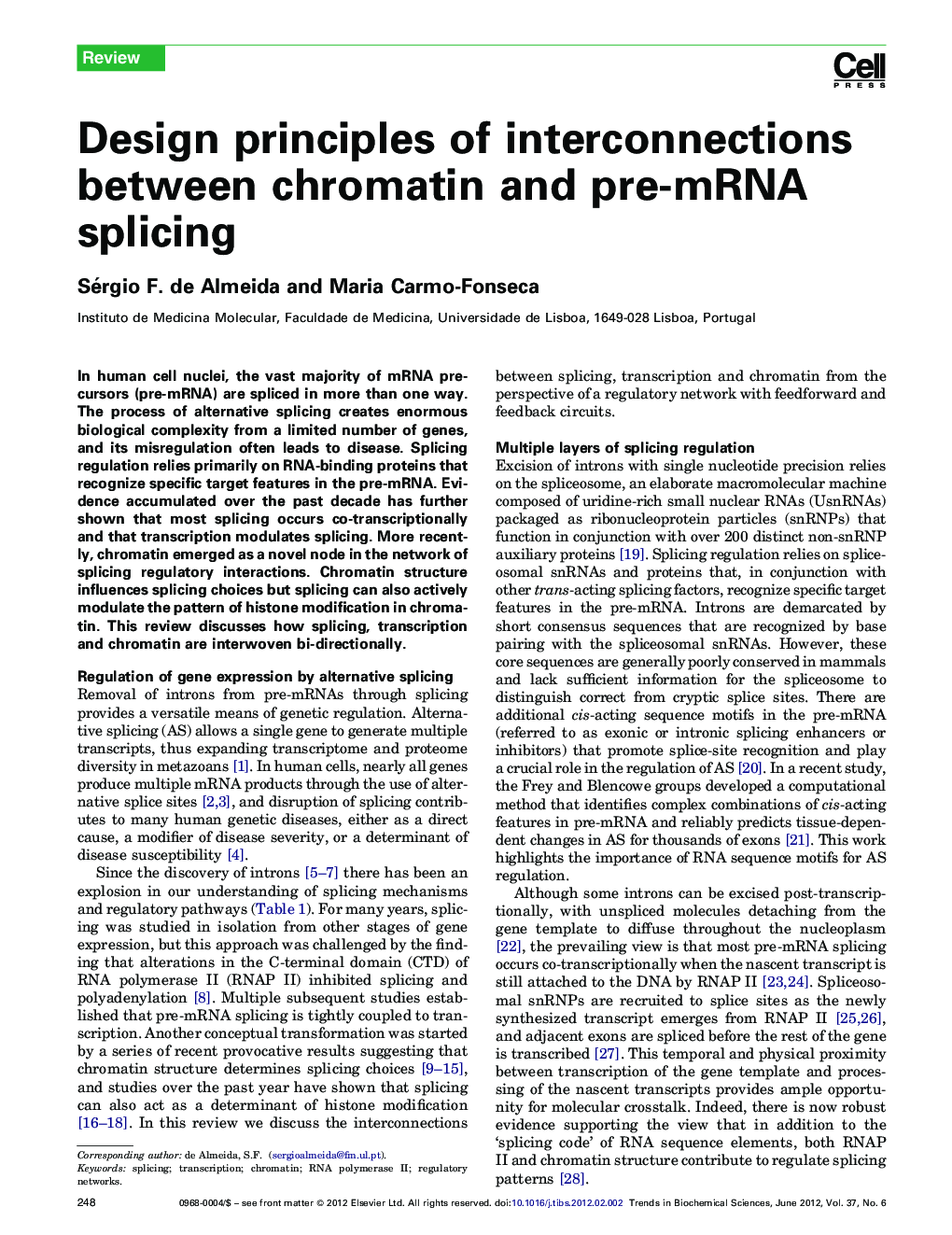| Article ID | Journal | Published Year | Pages | File Type |
|---|---|---|---|---|
| 2031058 | Trends in Biochemical Sciences | 2012 | 6 Pages |
In human cell nuclei, the vast majority of mRNA precursors (pre-mRNA) are spliced in more than one way. The process of alternative splicing creates enormous biological complexity from a limited number of genes, and its misregulation often leads to disease. Splicing regulation relies primarily on RNA-binding proteins that recognize specific target features in the pre-mRNA. Evidence accumulated over the past decade has further shown that most splicing occurs co-transcriptionally and that transcription modulates splicing. More recently, chromatin emerged as a novel node in the network of splicing regulatory interactions. Chromatin structure influences splicing choices but splicing can also actively modulate the pattern of histone modification in chromatin. This review discusses how splicing, transcription and chromatin are interwoven bi-directionally.
